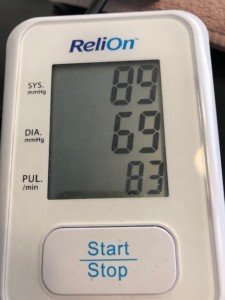The automated blood pressure machine is so much easier to use than the device that requires you to use a pump.
An automated blood pressure device can indeed be accurate, but there are several things you need to know before you rely on its reading.
“Some home BP monitors are accurate (especially the old-fashioned ones like in the doctor’s office), but some, not so much,” explains Susan L. Besser, MD, with Mercy Medical Center, Baltimore, and Diplomate American Board of Obesity Medicine and board certified by the American Board of Family Medicine.
“I recommend you take your unit with you to the doctor and do a comparison in the office to be sure it’s accurate,” says Dr. Besser.
“The machines at the booths at pharmacies usually aren’t accurate, as they aren’t calibrated and do tend to get abused.
“Lastly, remember, the size of the blood pressure cuff is very important — if you use the wrong size, the reading will not be accurate.”
What to Do for the Most Accurate Blood Pressure Reading
• Do not exercise, smoke or drink within 30 minutes of the reading.
• Empty your bladder, as a full bladder can skewer the reading.
• Make sure the room is not cold.
• Sit still and relaxed for five minutes before taking the reading.
• Do not cross your legs; keep feet flat on the floor.
• Make sure there is no clothing between the cuff and the skin.
• The arm with the cuff should be resting on a table at as close to heart level as possible.
• Do not talk during the test.
• If the reading doesn’t seem right, take another after five minutes.
Blood Pressure Results
Normal: under 120 (top number); under 80 (bottom number)
Elevated: 120-129; under 80
Stage 1 high blood pressure: 130-139; 80-89
Stage 2 high blood pressure: 140 or higher; 90 or higher
Hypertensive crisis (get to ER): 180 or higher; 120 or higher
Do not obsess about taking home blood pressure readings. Stressing out about the result could actually inflate it.











































